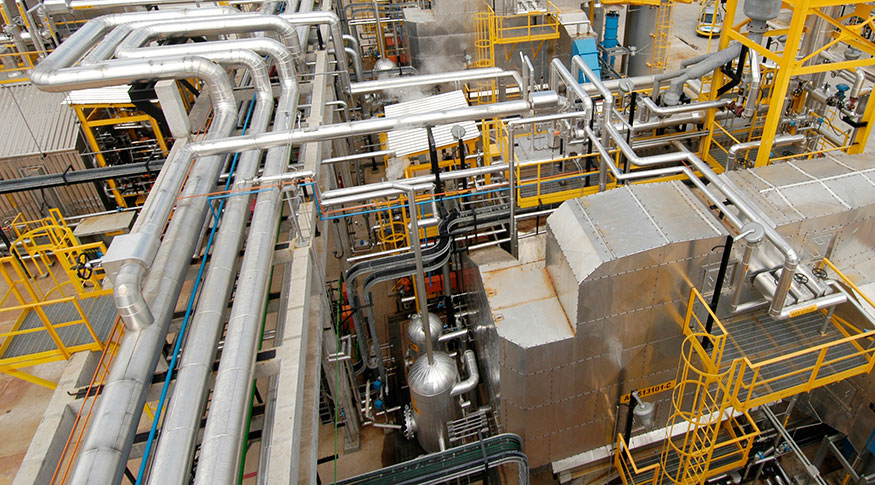National industry
Industry output advances 1.1% in March, after two months of decrease
May 10, 2023 09h00 AM | Last Updated: May 11, 2023 04h03 PM

From February to March, industry output in the country advanced 1.1%. The expansion is observed after two consectutive months of increase, a period marked by a cumulative drop of 0.5%. With this result, national industry is 1.3% below the pre-pandemic level (February 2020) and 17.9% below the record level of the series in May 2011. These are the results of the Monthly Industrial Survey - PIM, released today (10) by the IBGE.
“The first two months of 2023 were marked by decreases, although there was no widespread presence of negative results among the activities. In March, most activities had postive figures and industry recorded an increase not observed since October last year (1.3%). So there has been an improvement in the behavior of industrial production, mainly regarding this bigger increase, but that is still far from recovering losses in the recent past,” says the manager of the survey, André Macedo.
The researcher highlights that the current scenario in the country helps explain difficulties in the recovery of industry. “Our scope of analysis still deals with short-term issues, such as the high interest rate, which makes access to credit more difficult, the high level of default and the higher indebtedness of families, as well as the big number of persons out of the labor market and the high level of informal work.”
Among the 25 activities surveyed, 16 advanced in March. Among these increases, the main influences on the general index came from the sectors of coke, petroleum products and biofuels (1.7%), machinery and equipment (5.1%) and computer euipment, electronic and optical products (6.7%).
The sector of coke, petroleum products and biofuels had increased 0.5% in the previous month. “As this segment had recorded a decrease in January and December, it departs from a depreciated basis for comparison. Another highlight is the increase in the production of items such as automotive gasoline and diesel, among factors accounting for this increase.”
In the case of machinery and equipment, the positive result reversed the loss of 0.7% registered in February. “This activity presents an important increase with the rise of output of machinery and equipment, wihin industrial production, items related to the expansion/modernization of the industrial plant, as well as serialized or non-serialized items. Also relevant is the increased production of machinery and equipment for the agricultural sector and the construction sector,” Mr. Macedo explains.
Other relevant positive contributions came from pharmaceuticals (3.2%), other transportation equipment (4.8%), chemicals (0.6%), leather, traveling goods and footwear (2.8%) and non-metallic mineral products (1.2%).
On the other hand, manufacture of wearing apparel and accessories (-4.7%) accounted for the main contribution among the eight activities recording drops in the month. The sector had grown for three consecutive months, with a cumulative gain of 13.5% in the period. The sectors of furniture (-4.3%) and of metal products (-1.0%) were also a highlight among the decreases.
In terms of major economic categories, also against February, the sectors of capital goods (6.3%) and durable consumer goods (2.5%) accounted for the main increases, followed by intermediate goods (0.9%). The only decrease among the categories came from semi and non-durable consumer goods (-0.5%). This category recorded a decrease for the second month in a row, with a cumulative loss of 0.7% in the period.
Expansion of industry hits 0.9% as of interannual comparison
Against March last year, industry advanced 0.9% and the positive result reached 11 of the 25 subsectors surveyed. The main positive influences on the total of industry came from coke, petroleum products and biofuels (11.2%), mining and quarrying industry (3.3%) and pharmaceuticals (15.7%).
“In March, the advance of 0.9% reversed part of the loss of 2.4% registered in the previous month. But two factors are worth of mention: the calendar effect, since March this year had one day less than March last year, and the low basis for comparison, as industry dropped 1.9% in March 2022,” says André.
Other highlights were the positive contributions of other transportation equipment (22.3%), rubber products and plastic material (4.4%), food products (0.7%) printing and reproduction of recorded media (17.5%)./p>
In terms of decreases, the most influential activities were chemicals (-9.5%) and basic metals (-5.4%). Other negative impacts were those recorded by non-metallic mineral products (-7.3%), wood products (-15,5%), manufacture of wearing apparel and accessories (-7.3%) and electrical machinery and apparatus (-3.8%).
In the year, industry had a cumulative change of 0.4%. The cumultive indicator in 12 months recorded a null change (0.0%), having interrupted a sequence of 10 months with negative results.
More about the survey
PIM Brasil has been producing short-term indicators since the 1970s regarding the behavior of the real product of mining and quarrying and manufacturing industries. March 2023 marked the beginning of the release of the new time series of monthly indexes of the industrial production, after a redesign to update the sample of activities, products and informants; create a new weighting structure of the indexes based on the most recent industrial statistics; update the base year of reference of the survey; and incorporate new Federation Units in the release of regional results of the survey. These methodological changes are required and they aim at incorporating the economic changes of the society. The survey results can also be consulted at the Sidra database.




















